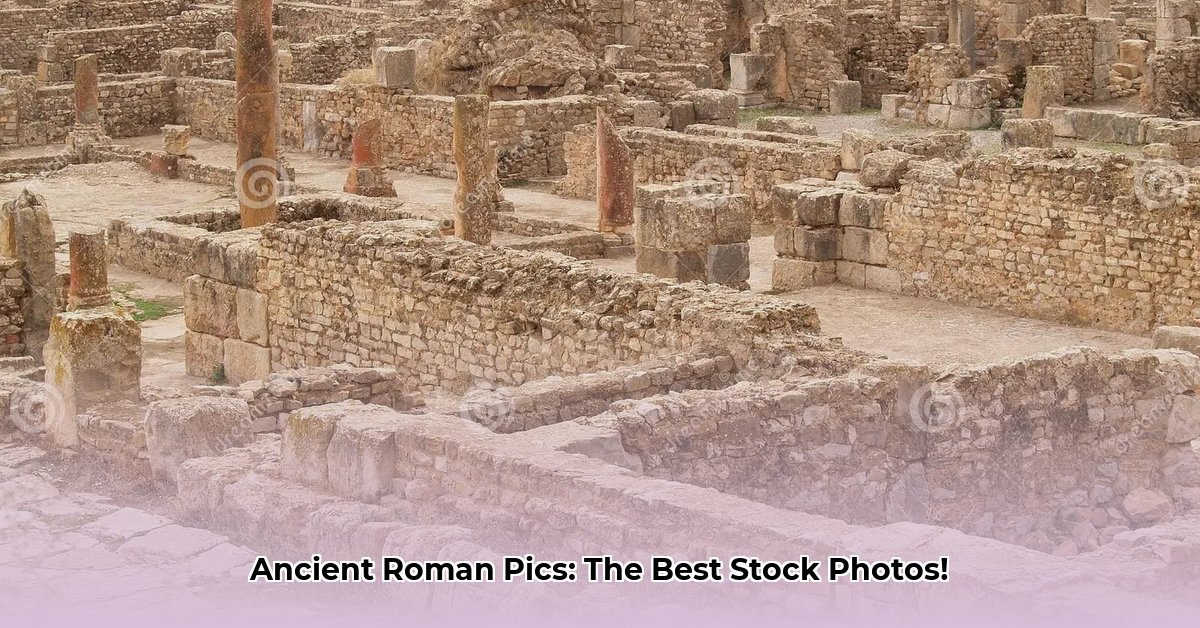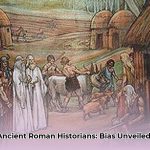Decoding Ancient Rome’s Visual Legacy: Sourcing Authentic Images
The enduring fascination with Ancient Rome is palpable. From its formidable legions and vast empires to its architectural marvels and intricate societal structures, this civilization continues to inspire awe and curiosity. For content creators, historians, educators, and enthusiasts alike, the pursuit of accurate, compelling, and legally usable visuals of this bygone era can be a complex endeavor. The expansive digital landscape of stock photography offers a seemingly endless array of choices, yet navigating the intricacies of licensing agreements, validating historical authenticity, and identifying genuinely high-quality ancient roman pics demands a meticulous approach. Need some Ancient Roman Images for your project?
This comprehensive guide is meticulously crafted to empower you with the knowledge and strategies required to source superior visuals of Ancient Rome. We will delve into leading stock photo platforms, meticulously evaluate their offerings for Roman imagery, and provide actionable insights to ensure both historical fidelity and strict compliance with usage rights. Your quest for the perfect visual asset, whether for a scholarly publication, an engaging presentation, or a captivating blog post, ends here.
Navigating the Visual Arena: Top Platforms for Ancient Rome Images
Our collective fascination with Ancient Rome consistently draws us to its iconic imagery: the majestic Colosseum, the intricate details of its engineering, and vignettes offering a glimpse into a civilization that profoundly shaped the Western world. These visuals transcend temporal boundaries, igniting curiosity and deepening our historical appreciation. But where does one procure high-quality ancient roman pics suitable for diverse projects, ranging from academic reports to commercial publications?
A thorough investigation into prominent stock photo sites reveals distinct curatorial approaches and varying strengths when it comes to cataloging Roman imagery. Each platform presents unique advantages for securing your ideal visual assets, catering to different project scales and budgetary considerations.
Getty Images: Unparalleled Depth and Authenticity
For projects where historical accuracy, unparalleled depth, and professional-grade quality are non-negotiable, Getty Images emerges as an exceptionally robust contender. Extensive research indicates their collection boasts over 66,000 images specifically categorized under “Ancient Rome.” This substantial volume signifies comprehensive coverage across myriad facets of Roman life, from grand imperial endeavors to nuanced daily routines. Getty’s pronounced emphasis on “authentic” visuals makes it an invaluable resource for ventures where meticulous detail is paramount. Whether your requirement is for precise depictions of Roman aqueduct construction, the specific armaments of a legionary, or detailed cartographic representations of the empire, Getty Images consistently ranks as a primary source for rigorous historical portrayal, often featuring editorial content from archaeological digs and historical reconstructions by renowned artists.
iStockphoto: Expanding Artistic and Interpretive Horizons
iStockphoto, a subsidiary of Getty Images, adopts a broader and often more artistically driven curatorial strategy. Beyond conventional photographs of ruins and artifacts, their sophisticated search functionalities frequently encompass terms such as “Ancient Rome painting,” “Ancient Rome people,” “Roman lifestyle,” and “ancient architecture concepts.” This expansive scope suggests a focus not solely on tangible structures, but also on artistic interpretations, conceptual visualizations, and intimate insights into the daily lives of Roman citizens. This approach proves particularly beneficial for projects seeking to infuse a more human element, explore creative angles of the subject, or require illustrative content. For instance, if your need is for historical illustrations of Roman attire, visual narratives depicting religious ceremonies, or conceptual designs inspired by Roman principles, iStockphoto often provides a promising and diverse avenue for such visual content.
Shutterstock: A Vast Commercial Compendium
While specific data regarding Shutterstock’s exact count of “Ancient Rome” images was not available for direct comparison in the initial review, it is widely recognized as one of the largest commercial stock photo libraries globally. Its extensive collection is likely to rival Getty and iStock in sheer volume, offering a broad spectrum of images ranging from high-resolution photographs to vector illustrations and elaborate digital art. Shutterstock is generally favored by marketing agencies, graphic designers, and businesses due to its subscription-based models which allow for frequent downloads. For Ancient Rome visuals, users can expect a mix of historical photography, illustrative recreations, and conceptual imagery often designed for commercial appeal. While offering a vast selection, users should apply similar scrutiny regarding historical accuracy and licensing as they would on other commercial platforms.
Pixabay and Unsplash: Accessible Alternatives with Critical Caveats
For projects operating under stringent budgetary constraints, Pixabay and Unsplash offer compelling free photo options. These platforms can be immensely useful for educational endeavors, personal blogs, student projects, or any non-commercial application where professional-grade resolution and precise historical accuracy are not the absolute highest priorities. However, users must approach these complimentary resources with informed caution and adhere to specific guidelines:
- Licensing Scrutiny is Paramount: Always, without exception, meticulously review the license agreement’s fine print for each individual image. Many images on these platforms operate under liberal licenses (e.g., CC0), but others may require explicit attribution or prohibit commercial use entirely. A complete understanding of permissible usage is critical to avoid potential legal pitfalls.
- Variable Image Quality and Historical Fidelity: It is crucial to acknowledge that image quality on these complimentary platforms can be inconsistent. Resolution may not always meet the exacting standards required for professional printing, large-scale displays, or high-definition digital presentations. More importantly, historical accuracy might be less rigorously vetted compared to premium platforms, meaning anachronisms or less authentic depictions can occasionally slip through.
Consequently, for professional content creators, advertising agencies, or any project demanding absolute visual integrity and legal certainty, these free platforms might not be the optimal choice. The absence of consistently high-resolution imagery and unequivocally clear, universally applicable usage rights can present significant risks, potentially negating the perceived cost savings. There exists an inherent and unavoidable trade-off between cost and unwavering reliability.
The Power of Keywords: Unlocking Relevant Visuals
A unifying principle across all evaluated platforms is the indispensable role of precise keywords. Terms such as “Rome,” “Italy,” “ancient,” “Colosseum,” “architecture,” “Roman,” “history,” “empire,” “citizens,” “gladiator,” and “forum” consistently emerge as highly effective search queries. This underscores the necessity of employing targeted terminology to maximize search relevance and refine results. Furthermore, the presence of related keywords like “ancient Greece,” “Roman Empire,” “aqueduct,” “villa,” and “acropolis” on platforms like Unsplash highlights an interconnectedness of visual themes, often reflecting the broader historical and geographical context of the ancient world. Employing long-tail keywords (e.g., “Roman engineering bridge,” “daily life Roman market”) can yield more specific and unique visual assets.
The Horizon: AI and the Future of Roman Imagery
Looking towards the future, artificial intelligence (AI)-generated visuals are poised for increasing prominence in the stock photo landscape. This groundbreaking technology holds the transformative promise of bespoke, custom-made images tailored to exact specifications. Imagine the capacity to generate a photorealistic depiction of a specific Roman battle formation, a detailed reconstruction of a long-lost structure’s interior, or a nuanced portrayal of a particular historical figure based on available evidence. While immensely exciting for creative possibilities, a fundamental and ongoing challenge will be ensuring historical accuracy, authenticity, and avoiding the perpetuation of biases inherent in training data. Robust mechanisms for fact-checking and expert verification will be essential to ensure that these AI-generated images do not inadvertently propagate historical inaccuracies or culturally biased interpretations. The stock photo market is unequivocally on a path of continuous evolution, with the optimal balance lying between accessibility, creative control, and robust rights management.
Strategic Recommendations for Visual Sourcing
To aid in selecting the most suitable platform for your ancient roman pics, consider this strategic summary of findings:
| Platform | Key Features | Best For |
|---|---|---|
| Getty Images | Extensive, high-resolution collection; focus on “authentic” and editorial visuals; premium licensing. | Projects demanding paramount historical accuracy, editorial integrity, or high-end professional use; academic research; publishing; major advertising campaigns. |
| iStockphoto | Diverse search options, including illustrations, conceptual art, and daily life depictions; broader visual variety; more flexible pricing. | Infusing human elements into projects; artistic interpretations of Roman history; scenarios where visual diversity and creative flexibility are valued; commercial projects with a balanced budget. |
| Shutterstock | Massive library; wide array of content types (photos, vectors, illustrations); popular subscription models. | Agencies and designers requiring high volume downloads; diverse needs from commercial advertising to web content; general purpose use where variety and quantity are key. |
| Pixabay/Unsplash | Free to use; readily accessible for immediate needs; community-contributed content. | Educational endeavors; personal blogs; non-commercial applications; student projects; projects with limited budgets where extreme resolution or absolute historical fidelity isn’t the primary concern. |
Ultimately, the optimal platform for sourcing ancient roman pics is meticulously determined by your project’s specific requirements, budgetary constraints, intended usage rights, and the level of historical accuracy you seek to achieve.
Authenticating Ancient Rome Visuals: A Deep Dive into Veracity
Core Insights:
- Ancient Rome’s enduring charm lies in its intricate fusion of architectural grandeur, profound artistic impact, and complex historical evolution.
- The city’s remarkable journey from a sprawling empire to a pivotal papal state profoundly influenced its cultural and artistic identity, leaving layered historical markers.
- The Renaissance, Baroque, and Neoclassical eras uniquely solidified Rome’s indelible position as a global artistic and cultural hub, continuously reinterpreting its ancient past.
Ancient Rome. The very utterance conjures grand visions of imperious emperors, disciplined legions, and breathtaking monuments. Yet, when tasked with selecting visuals for your project, are all images truly equivalent in their historical veracity? The answer is an unequivocal no. So, how to verify Rome images to ensure they align with the historical accuracy, grandeur, and narrative integrity your project unequivocally deserves? Let’s embark on a methodical exploration of techniques to ensure your chosen visuals genuinely reflect the authentic essence of this magnificent civilization, discerning genuine history from romanticized fiction.
Navigating the Digital Landscape of Rome Images: Beyond the Surface
The pursuit of authentic Rome images often feels akin to navigating the labyrinthine passages of the Domus Aurea itself—an overwhelming array of choices. While prominent stock photo platforms like Getty Images, iStockphoto, and Unsplash present a plethora of options, the quality, and more crucially, the historical authenticity of their content can diverge significantly. The fundamental challenge lies in discerning genuinely accurate depictions from idealized, anachronistic, or even misleading representations.
- Getty Images & iStockphoto: Renowned for their high-quality imagery, professional licensing frameworks, and often editorial collections, these platforms generally serve as reliable sources. However, even within their extensive archives, diligent scrutiny remains absolutely essential to confirm accuracy, especially for conceptual or artistic interpretations which might not be strictly factual.
- Unsplash & Pixabay: While offering royalty-free images, content on these platforms typically undergoes less rigorous historical curation. This places a greater onus on the user to meticulously sift through content to identify historically precise representations, as artistic license or modern interpretations are more common.
Deciphering Visual Clues: The Pursuit of Authenticity
Just as seasoned historians meticulously scrutinize ancient texts and archaeological stratigraphy, a similar analytical approach must be rigorously applied to visual details within an image. Ponder these critical questions:
- Architectural Nuances: Are the architectural styles, construction materials, and structural details depicted accurate for the specific period within Roman history the image purports to represent? For instance, the Colosseum’s construction methods differed from temples built centuries earlier. Are the visible repairs or modern interventions clearly distinguishable from original elements?
- Attire and Artifacts: Does the clothing genuinely reflect Roman-era attire for the specific social class and historical period? Are the armaments, tools, household items, or artistic elements consistent with documented historical evidence or archaeological findings? Anachronisms in clothing or technology are red flags.
- Color and Texture Palettes: Are the colors and textures consistent with what is known about Roman art, architecture, and daily life? While many ancient ruins appear monochrome today, they were often vibrantly painted in antiquity. Images that show this, based on scholarly reconstruction, can be more authentic than sterile grey depictions.
- Contextual Fidelity: Does the surrounding environment, landscape, or depicted activity align with known historical facts? A Roman legionary marching through a desert in full plate armor from a later period would be geographically and chronologically incongruous if presented as a typical scene from the early Republic.
- Source Verification: Can the image’s origin be traced? Is it a photograph of an actual archaeological site, a meticulously researched reconstruction, or a purely imaginative rendering? Meticulously preserved visuals like the vivid color images of Rome from the 1890s, found in collections such as the Library of Congress’s Photochrom collection, offer a poignant benchmark, illustrating the compelling co-existence of emerging modern life with ancient legacies. This process can be likened to archaeological dating, but specifically applied to images themselves.
The Mosaic Test: A Measure of Roman Influence
The widespread discovery of Roman mosaics, found not solely within the Italian peninsula but extending into distant regions such as modern-day Cyprus, Turkey, North Africa, and England, powerfully illustrates the far-reaching influence and cultural diffusion of Roman civilization. When assessing how to verify Rome images, it is insightful to consider this geographical impact. Does the image, where applicable, subtly or overtly reflect the expansive reach of Roman culture and its provincial manifestations, thereby adding another layer of authenticity to its representation of the empire’s full scope?
Beyond the Colosseum: Exploring Nuanced Aspects
While iconic landmarks like the Colosseum, the Pantheon, and the Roman Forum are undeniably central to Rome’s visual identity, the city’s historical narrative runs considerably deeper. To select truly nuanced visuals, it is beneficial to seek images that illustrate Rome’s transformative evolution into the political jurisdiction and spiritual heart of the Papacy—a pivotal period where its classical heritage profoundly intertwined with an emerging religious authority. Do the chosen images encapsulate the city’s multifaceted past, spanning its journey from Republic to Empire and eventually to the Papal State, offering a more complete and less stereotyped narrative? Look for visuals depicting everyday life, diverse social classes, provincial cities, or specific Roman innovations beyond monumental architecture.
Getty vs. iStockphoto: A Comparative Look at Ancient Rome Image Availability
Core Insights:
- Getty Images and iStockphoto offer extensive digital collections featuring Ancient Rome, each with distinct strengths and pricing models.
- The predominance of iconic landmarks in these visual assets can sometimes overshadow other vital, yet less visually dramatic, aspects of Roman life and history.
- A significant portion of available images comprises artistic reconstructions, conceptual illustrations, or modern photographs of ruins rather than direct historical photographs or verifiable contemporary records.
The quest for images of Ancient Rome in the digital age presents a true wealth of options, but are all these visual assets equally valuable, accurate, or suitable for your specific project? Let’s delve further into a direct comparison between Getty Images and iStockphoto, analyzing their Getty vs. iStockphoto Ancient Rome Image Availability to illuminate their respective utility.
Navigating the Visual Landscape: Scope and Volume
Both Getty Images and iStockphoto host tens of thousands of images directly related to Ancient Rome. This impressive volume encompasses universally recognized landmarks such as the Colosseum, the enduring Roman Forum, the majestic Pantheon, and countless other archaeological sites. While these visuals are undeniably impressive and form a vast digital archive, it is essential to consider their scope and whether they represent a truly comprehensive historical record beyond the most famous sites. Getty often excels in editorial content, including images from ongoing archaeological digs, academic reconstructions, and historical events, making it a go-to for journalistic or scholarly articles. iStockphoto, conversely, often features more conceptual, illustrative, or culturally interpretive content which may include stylized depictions of Roman life or historical figures.
Reconstructed Reality Versus Historical Documentation
A critical consideration arises: what proportion of the visuals encountered across these platforms represents “real” Rome as it once stood, versus meticulously researched artistic interpretations, modern reconstructions, or photographs of contemporary ruins? The pervasive presence of reconstructed images invites a crucial inquiry: Are we engaging with authentic, direct historical evidence, or a more romanticized, idealized, or interpretative version created through contemporary lenses? This distinction is absolutely vital for accurate historical representation and for managing audience expectations. Editorial images from Getty are more likely to be direct photographic evidence or authenticated reconstructions, whereas iStockphoto might lean more towards visually appealing, conceptual art derived from historical understanding.
Representational Biases: Unearthing Unseen Narratives
It is paramount to assess the breadth of representation provided by these vast image collections. Do they accurately portray the full spectrum of Roman society, including its diverse socioeconomic classes, regional variations across the vast empire, and the nuances of daily life beyond the well-documented narratives of emperors, gladiators, and senators? Are these vital facets adequately depicted, or do we primarily receive glimpses solely of the Roman elite, monumental architecture, and military might? What essential aspects of Roman existence—such as trade, agriculture, family life, or the experiences of non-citizens—are conspicuously absent or underrepresented from the prevailing visual discourse? Both platforms, by their nature, will have some representational biases, often favoring the visually dramatic or commercially appealing.
Licensing and Accessibility: Practical Considerations
The practicalities of licensing restrictions and usage rights vary significantly between these platforms, impacting the true accessibility of their imagery. Getty Images typically operates with Rights-Managed (RM) or sophisticated Royalty-Free (RF) licenses that can be more complex and costly, particularly for high-profile commercial uses. iStockphoto primarily uses a simpler Royalty-Free model, which offers broader usage rights for a one-time fee, making it often more affordable and accessible for smaller-scale projects or frequent use. Understanding whether you can legally employ a given image for your specific project (e.g., educational, non-commercial, commercial print, web, broadcast) is a major determining factor in its practical usability. Depending on your project’s scope, budget, and distribution, selecting the correct license can become a primary deciding criterion.
Actionable Steps for Utilizing Ancient Rome Images
To leverage these digital resources both responsibly and effectively, consider the following strategic approaches:
- For Educators & Content Creators: Critically evaluate the inherent representational biases often present in widely used stock images. Actively seek visuals that offer diverse perspectives on Roman society, including daily life, provincial cultures, and various social strata.
- For Museums & Historical Institutions: Actively collaborate with image providers to curate and promote specialized collections that rigorously prioritize historical authenticity, comprehensive representation, and scholarly accuracy. Consider commissioning expert-reviewed content.
- For Researchers & Art Historians: Undertake in-depth investigations into the evolving visual representation of Ancient Rome across different historical periods and media. Analyze how contemporary interpretations shape commercial imagery.
The Broader Context of Visuals
The fundamental understanding must be that most of these images are interpretations and representations, not flawless, direct reflections of historical reality. They are profoundly shaped by contemporary perspectives, commercial imperatives, artistic license, and the availability of archaeological evidence.
| Platform | Pros | Cons |
|---|---|---|
| Getty Images | High-quality editorial imagery; extensive selection of authenticated historical assets; diverse licensing models. | Potentially higher costs for specific usage rights; complex licensing structures for beginners. |
| iStockphoto | More affordable Royalty-Free options; well-suited for broader creative and smaller-scale projects; good mix of photos and illustrations. | Image quality can vary more than Getty’s premium collections; specific licensing restrictions still apply. |
Ultimately, the process of searching for Ancient Rome images on stock photo platforms mirrors archaeological excavation itself. It demands a deep dive into vast archives, meticulous analysis of findings for authenticity and relevance, and the thoughtful reconstruction of a more complete and nuanced historical picture.
How to Source Ancient Rome: A Step-by-Step System for Historical Research
Core Insights:
- Primary sources are unequivocally indispensable for understanding ancient Roman history, culture, and intricate societal structures, offering direct windows into the past.
- Rigorous critical analysis is absolutely essential to account for the inherent biases, specific agendas, and significant limitations within these historical sources.
- Literary accounts must be systematically cross-referenced with robust archaeological findings and material culture to achieve a truly comprehensive and substantiated historical perspective.
What instantly comes to mind when you contemplate Ancient Rome? Perhaps the formidable emperors, the sprawling Colosseum, or the intricate political dynamics. Yet, have you ever considered the original sources from which this profound knowledge is derived? The answer lies in primary sources: direct connections to the past that enable us to unravel the complexities and lived experiences of Roman civilization.
However, immersing oneself in these ancient texts and artifacts is not always straightforward. These sources frequently embody the biases, specific perspectives, and ideological leanings of their original authors or creators, making critical assessment indispensable for grasping the complete and nuanced historical narrative. This understanding is key not just for academic research but for verifying the authenticity of any visual representation purporting to depict Roman life.
How to Source Ancient Rome: A Step-by-Step System for Researchers and Enthusiasts
So, how does one effectively navigate the rich and often challenging landscape of Ancient Roman sources? Here is a systematic, step-by-step approach meticulously designed to maximize accuracy, depth, and reliability in your research, enabling you to achieve a high degree of success in locating relevant and verifiable information:
- Define Your Research Inquiry with Precision: Before commencing any deep dive into historical texts or visual archives, precisely define your research inquiry. Are you specifically investigating Roman military tactics during the Punic Wars? Or perhaps seeking insights into the daily routines and domestic architecture of Roman citizens in Pompeii? A more focused, specific question will significantly streamline the identification of relevant primary and secondary sources.
- Unearth Diverse Primary Sources Systematically: Actively seek out original materials produced during the Roman period. This encompasses a broad and varied range:
- Classical Literary Works: Engage with texts by renowned authors such as Livy (Roman history), Tacitus (Annals, Histories), Cicero (orations, letters), Virgil (Aeneid), Horace (odes), and Juvenal (satires).
- Inscriptions: Locate and analyze inscriptions found on public monuments (e.g., Trajan’s Column, Arch of Titus), tombstones, public buildings, and individual artifacts. These provide direct, often unfiltered, insights into official decrees, personal lives, and religious practices.
- Ancient Coinage: Study Roman coins, which serve as miniature historical records. Their depictions of emperors, deities, events, and legends offer valuable propaganda messages and chronological markers.
- Papyri and Tablets: Explore administrative documents, letters, legal texts, and literary fragments preserved on papyrus scrolls or wooden tablets (e.g., Vindolanda Tablets). These offer unparalleled glimpses into daily life and bureaucratic processes.
- Architectural Remains: Directly examine archaeological sites, ruins, and their surviving architectural elements. Consider the materials, construction techniques, and spatial organization.
- Cross-Reference Accounts with Rigor: Adopt a rigorous methodological approach by never placing sole reliance on a single source. Always compare multiple accounts of the same event or phenomenon, meticulously considering the respective authors’ backgrounds, potential political or personal agendas, and inherent biases. For example, contrasting Roman historical perspectives with contemporary Greek accounts (e.g.,










